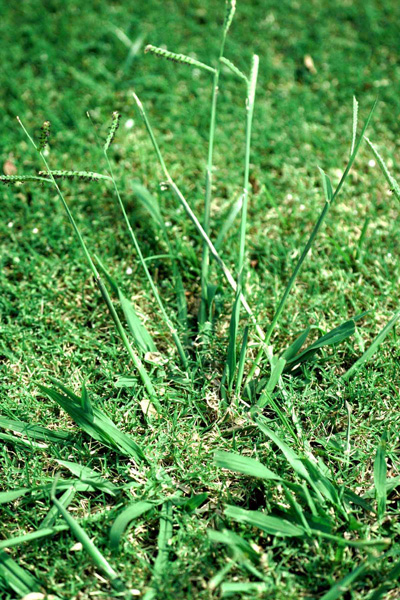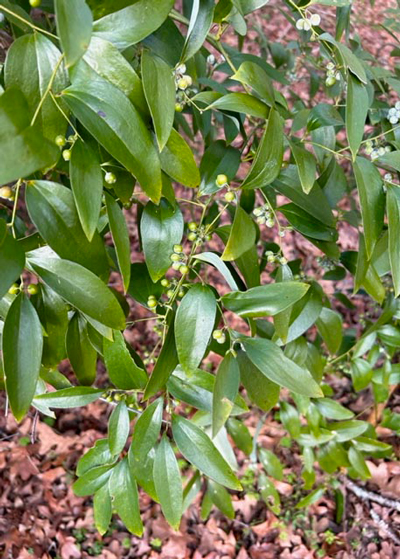Q&A – Ask Neil: January 18, 2024
(Please read these instructions carefully.)
Before you post your question, please look at recent issues to see if someone else has already asked it. You might find your answer there.
How to submit your question…
(Note: You may need to allow a pop-up window to come up in order to get the link for sending your photo(s). If you have already submitted your question and didn’t see the pop-up window, please click here.)
• Click the link provided below to post your question. After you submit your question, a new window will pop up giving you the address to which you can e-mail a SHARP, HIGH-RESOLUTION PHOTO to accompany your question. Please DO NOT SEND THUMBNAIL PHOTOS in case I need to zoom in to see things.
• Click here to post your question.
• Please ONLY POST YOUR QUESTION ONE TIME. We can only accept a set number of questions each week, and when we get duplicates it costs other people their chances.
• One question per reader, please.
• Please use this only for posting questions – not for standard emails.
• Watch for your answer in the following week’s e-gardens.
• I choose those of greatest general interest. For example, plant IDs seldom make the cut.
• I must have your first name or initials.
• I must have your city or county. (Texas is a very large state.)
QUESTION 1
WHAT IS THE BEST WAY TO TREAT DALLISGRASS, AND IS THERE A PRE-EMERGENT TO CONTROL IT?
Question: I had what I believe was dallisgrass last spring and summer. It is very invasive, and regular treatments did not seem to work on it. What is the best way to treat it, and is there a pre-emergent that will work? When would it need to be applied? Sue P., Tarrant County.

Answer: Indeed, dallisgrass is invasive. Every one of its quickly produced seeds is viable, even without pollen fertilization. One clump can result in dozens of new plants in only one or two growing seasons.
But even before that, let’s ID dallisgrass to be sure that’s what you have. It’s a perennial weed that develops dinnerplate-sized dark green clumps. Seedheads shoot up only a couple of days following mowings in late spring, summer and fall. The flower stalks look like old fashioned power lines with cross arms, and the seeds are BB-sized green disks with black specks, one per seed. Most of the spread of dallisgrass comes as the clumps grow larger and larger. Therefore, applications of pre-emergent herbicides would be of limited value.
For decades home gardeners used MSMA to eliminate dallisgrass from bermudagrass lawns without harming their bermuda turf. It would yellow the bermuda, but it would bounce right back. But MSMA was taken off the consumer market 12-15 years ago and now can only be bought by certified applicators. You might contact one of them if you do have dallisgrass and ask if they feel they could control it with their sprays this growing season. Once your lawn is clear of it again you should have far less trouble keeping it out.
QUESTION 2
WHAT IS A GOOD, LOW-MAINTENANCE SHRUB FOR THE FRONT OF OUR HOUSE?
Question: I’m looking for a low-maintenance shrub for the front yard area. I need a type that tolerates regular watering and that doesn’t require a lot of trimming – in other words, doesn’t grow too tall. What would you suggest? Misti H., Rowlett.
Answer: I would suggest the same thing I have done around my house. I have used a ton of dwarf hollies. 47 years ago I planted dwarf Chinese hollies (sun or shade – ours are 36 in. tall after 47 years and have only been trimmed lightly one or two times. Also, Carissa hollies (Ours are in shade and rich, moist soil, yet they have stayed at 34 in. without pruning). And dwarf yaupon hollies (shade or sun, grow to 30 in. tall and 36 in. wide if not sheared annually) and dwarf Burford hollies (grow to 4 to 6 ft. in sun or shade without pruning, can be kept shorter with annual trimming). Of these, only the dwarf Chinese holly is particularly prickly. Your independent retail nursery can show you other great hollies if you need something taller.
Consider, too, the many types of nandinas. I’ve used dozens of compact nandinas in many parts of our landscape, but there are other good types that are newer. And the cold-hardy Japanese boxwoods are good, although you’ll want to shear them lightly every 6 months just to keep them compact.
Work with a good local independent retail garden center that knows your area well – a place where you can talk to a Texas Certified Nursery Professional.
QUESTION 3
HOW CAN A SCHEFFLERA BE TRIMMED TO MAKE IT MORE COMPACT?
Question: We brought our schefflera in for the winter. It very quickly dropped leaves and is looking stretched. How can we make it more compact? Vicki J., Fort Worth.
Answer: Scheffleras are very large trees in their native homes, so it’s to be expected that they would drop leaves when we put them into darker indoor conditions inside our houses. When one becomes leggy the best way to address it is to trim it back considerably prior to spring growth, then perhaps repot it into fresh potting soil and the next larger pot size to give it growing room, and set it outside in bright shade to regrow strong new trunks and leaves. As fall approaches each year, move it gradually to a darker environment to let it adjust to less and less light before you commit to bringing it indoors. Cut back somewhat on the water and fertilizer you give it while it’s inside over the winter. You really don’t want it to try to grow indoors.
QUESTION 4
IF RADIAL SHAKE OF OUR LIVE OAK’S BARK HASN’T COMPLETELY HEALED, WILL THE LEAVES STILL HAVE PRODUCED ENOUGH FOOD TO SAVE THE ROOTS?
Question: Our live oak that suffered “radial shake” from the 2021 extreme cold did put out a beautiful crop of new green leaves. However, the crack in the bark hasn’t completely grown together. Will enough sugars have been taken down to the roots to save the tree? Sara A., McKinney.
Answer: Without a photo, better yet, without seeing the tree in person, I can’t tell. If the new leaves were produced by the top growth above the bark damage, that’s a good sign. If you’re not seeing any limb death, that’s another good sign. You’re going to know by late March when the new growth for 2024 has begun. It does sound optimistic.
QUESTION 5
SHOULD CRAPE MYRTLES BE WATERED THROUGH THE WINTER?
Question: I have two young crape myrtle trees that were planted in April 2023. Do I need to continue watering them through this winter? Should I cover them with mulch? Leslie S., Princeton.
Answer: If you’ve not had significant rain (1 inch or more) within a 10-day period, and especially if temperatures have climbed into the 60s much of that time, yes, I would water them. You won’t be overwatering them on that kind of schedule. Soak them deeply, then wait another couple of weeks. Do that for the first two years, then you can gradually back off as their roots extend deeper and wider.
QUESTION 6
HOW CAN I ELIMINATE THIS VINE IN MY TREES? IT IS TAKING OVER.
Question: This vine is taking over my trees. It is a smooth vine (no stickers). How can I control it? Is it like poison ivy? Faylene H., Ben Wheeler.

Answer: So, I worked for 25 minutes trying to ID this thing myself. The glossy, palmately compound leaves that I assumed to be evergreen were enough to get my curiosity going. And then I saw what I thought was a flower up in the right corner-ish. Even that didn’t help, though. So I sent your photo to a friend who was equally stumped, and about the time I started to send it to Greg Grant for help, Friend 1 wrote back that Greg had ID’d it for him as Smilax smallii, Jackson vine.
Now, I know smilax as well as I know hackberries, but the smilax I know is a wicked brier that was chest deep when we bought our 11 acres on which we have lived and gardened for 47 years. Until I took action, hired our neighbor with his brush hog and turned him loose to mow it all down, I was surrounded by the stuff.
However, I have roundleaf greenbrier as well as one with silvery speckles all over its glossy foliage. If it weren’t for its barbed-wire-like thorns, constrictor-like stems, and entangling root systems, they could be horrible plants in the landscape and garden. As it is, they’re even worse.
This one, however, our new buddy Jackson vine, is really quite attractive (in your photo). Greg says it used to be used as greenery in floral designs.
However, I also see warnings that its strong growth can overtake desirable trees and shrubs (as you’re observing). When that happens your best recourse would probably be to cut out as much as you can this winter, then spray the regrowth come early spring as it is getting started down at ground level.
I have found on my own greenbriers that mowing alone gets rid of most of the plants. Those that return generally have large tuberous roots that are most effectively dug out with a sharpshooter spade. It’s not as difficult as it sounds, and you don’t have to mix sprays time after time.
Information on Smilax smallii online…
Good information from a very reputable source:
https://plants.ces.ncsu.edu/plants/smilax-smallii/
Excellent information on the various species of briers and their control:
https://hgic.clemson.edu/factsheet/smilax-greenbrier/
Nice photo of this vine with fruit:
https://www.shootgardening.com/plants/smilax-smallii
